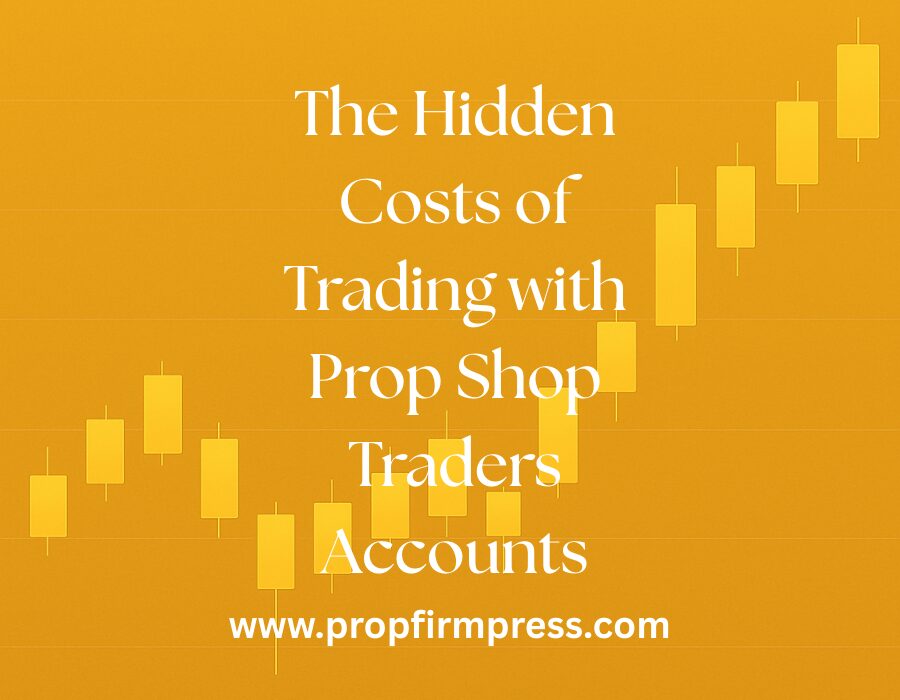The Hidden Costs of Trading with Prop Shop Traders Accounts
The Initial Fee and Its Impact on Profit Margins
Many aspiring traders are attracted to prop shop trader accounts because of the promise of trading larger capital without risking their own funds extensively. However, the initial fee required to gain access to these accounts is often overlooked when calculating potential profits. This upfront payment, sometimes referred to as the evaluation fee or account purchase fee, can significantly eat into your net earnings, especially for newcomers who haven’t yet mastered their strategies. Traders need to carefully assess whether their expected returns can offset this initial cost before committing.
Ongoing Monthly Fees and Subscription Models
Beyond the initial fee, many prop shops operate on subscription models or charge monthly maintenance fees. These recurring expenses can accumulate quickly, reducing overall profitability. Traders who experience drawdowns or have slower earning periods might find themselves paying fees without corresponding income, which is a hidden financial strain. It’s essential to factor these ongoing costs into your trading plan to ensure they don’t undermine your long-term success.
Profit Splits and Commission Structures
One of the most significant hidden costs when trading with prop shop accounts comes through profit splits and commissions. While the firms provide capital, they also take a portion of your profits. This division can vary widely, with some firms retaining up to 50% or more. Traders must understand these split percentages clearly, as they directly impact how much of the profit stays in the trader’s pocket. Higher splits might be acceptable for access to substantial capital, but for smaller profits, the takeaway can feel disproportionately low.
Risk of Losing Deposits Due to Trading Violations
Prop trading firms often enforce strict rules to minimize risk, including trading limits, stop-loss requirements, and time restrictions. If a trader violates these guidelines, they may forfeit their initial deposits or personal funds tied to the account. This loss of capital is a hidden cost that traders sometimes ignore in the excitement of trading larger sums. Understanding the rules thoroughly and adhering to them is crucial to avoiding unexpected forfeitures that erode your overall profitability.
Platform and Technology Fees
Many prop firms require the use of proprietary platforms or specific third-party software, which can lead to additional costs. Subscription fees for advanced trading tools, charting software, or data feeds might not be included in the initial package and can add to monthly expenses. Traders who rely heavily on specialized technology to execute their strategies need to consider these supplementary costs, which may not be immediately apparent during account sign-up.
Psychological Costs and Stress Factors
The intangible but very real psychological costs associated with prop shop trading accounts can affect performance and decision-making. The pressure to perform under strict evaluation conditions or against rigid rules can lead to stress, anxiety, and overtrading. This mental toll often results in poor trading decisions and increased losses, which translates to financial costs. Managing emotional resilience is as important as understanding the fee structure to avoid hidden psychological expenses.
Limited Flexibility and Its Financial Implications
Prop shop accounts typically come with restrictive trading parameters such as maximum drawdowns, maximum position sizes, and limited instrument choices. While these rules protect the firm’s capital, they can limit a trader’s ability to adapt strategies to market conditions. This lack of flexibility may cause missed opportunities and potential profits, an often overlooked ‘cost’ connected to trading within firm-imposed boundaries. Traders need to weigh these constraints against the benefits of access to capital.
Withdrawal Restrictions and Delays
Another hidden cost relates to the limitations on withdrawing profits. Many prop firms have withdrawal thresholds, hold periods, or require proof of consistent profitability before releasing funds. This delays cash access and can create cash-flow issues, especially for traders relying on these earnings. Additionally, any administrative fees for processing withdrawals may further reduce the amount ultimately received by the trader, causing frustration and financial inconvenience.
Learning Curve Costs and Time Investment
Success with prop shop trader accounts doesn’t happen overnight. New traders often face a steep learning curve, during which they may incur losses or need to retake evaluation tests. The cost of time invested in mastering trading rules, platforms, and strategies should be considered a hidden expense. Additionally, if retesting or requalification comes with extra fees, these can add up significantly before a trader is capable of generating consistent profits.
Hidden Penalties for Scaling and Performance
Some prop firms implement scaling plans, allowing traders to increase their capital based on performance. While this sounds appealing, there may be hidden penalties or fees associated with scaling up and down. Performance inconsistencies might lead to forced reductions in funded capital or even temporary suspension of trading privileges. Such restrictions can stall momentum and result in opportunity costs, as traders are unable to maximize their earnings during favorable market conditions.
